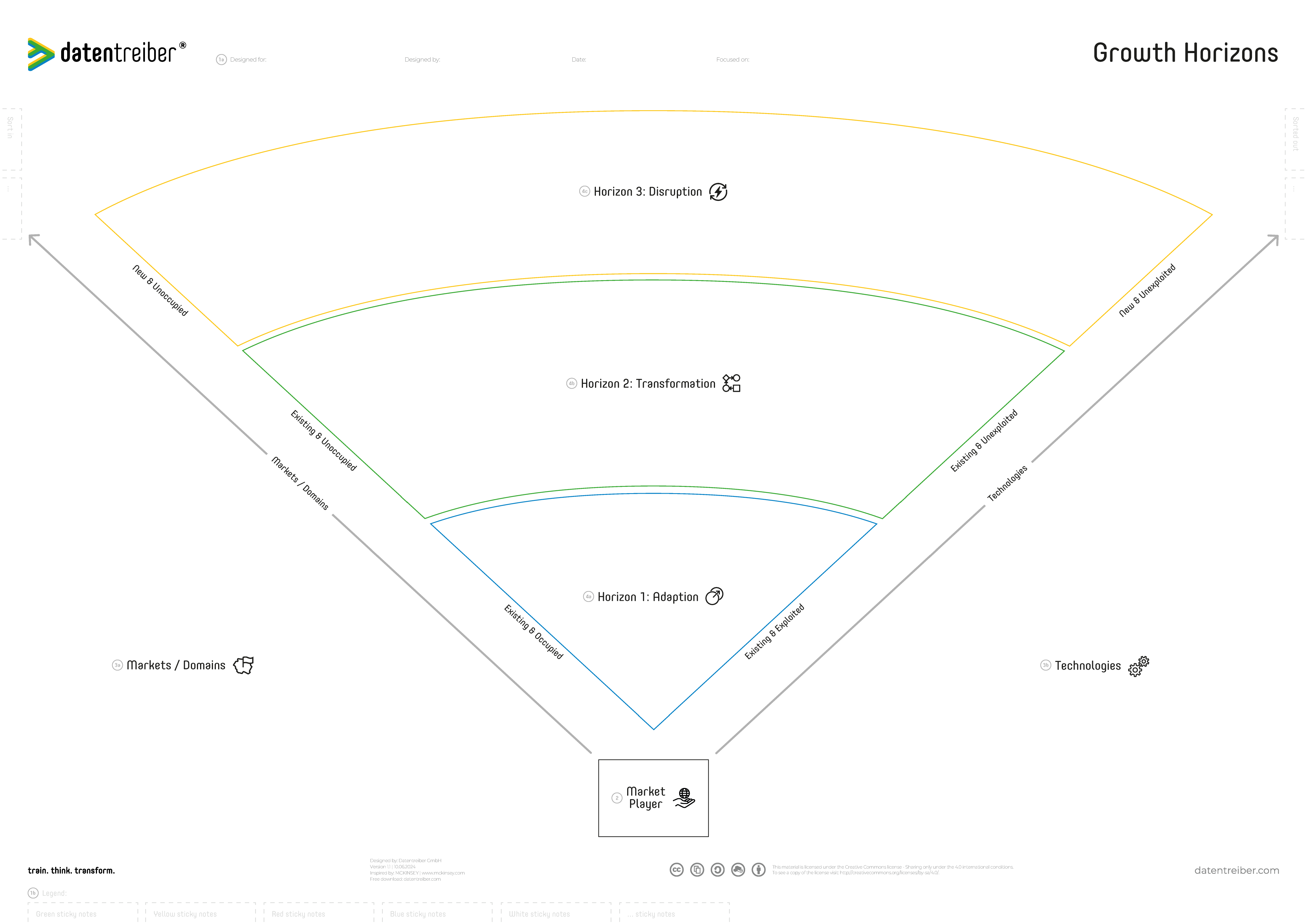
From Adaption to Transformation to Disruption
Growth Horizon Canvas
Using the Growth Horizons Canvas you can arrange innovations based on their marketability and technological maturity. The prioritization tool helps you to focus at the right point in time on the short-, mid- and long-term business ideas.
What is the Growth Horizons Canvas?
The Growth Horizons Canvas helps you position innovation ideas within a structured timeline, showing how they evolve from short-term improvements in known markets and technologies to long-term, disruptive solutions that depend on emerging domains and unproven technologies. By examining the perspective of a specific “Market Player”—the entity or organization observing the landscape—this canvas reveals how markets (or domains) and technologies intersect at different stages of development, offering clarity on when and where to invest in new business ideas.
Through three distinct horizons—H1 (Adaption), H2 (Transformation), and H3 (Disruption)—you can map each idea based on market familiarity and technological maturity. H1 focuses on immediate enhancements to the existing core business. H2 looks toward medium-term growth through markets and technologies the organization does not yet leverage. H3 envisions long-term possibilities where neither the market nor the technology is fully formed, highlighting higher risk but also the greatest potential impact.
The Growth Horizons Canvas is available for free under a Creative Commons license: You may use and modify the canvas as long as you cite Datentreiber in particular as the source.
When to Use the Growth Horizons Canvas?
The Growth Horizons Canvas is particularly useful in scenarios such as:
- Early-Stage Innovation Planning:
When you have a range of new product or service ideas and need to understand how soon—and how realistically—they can be brought to market. In the context of data and AI, this means assessing whether you have (or can gather) the data required to develop meaningful AI or analytics solutions in the short term, and identifying which ideas need longer data collection or more advanced AI techniques. - Strategic Roadmapping:
To determine which innovations should be pursued in the short term to strengthen the core business, which should be prepared for mid-term rollout as markets and technologies mature, and which to keep as long-term bets on future disruptions. For data and AI projects, this also involves balancing quick wins (e.g., applying existing models to current data) against investing in emerging AI capabilities or new data sources that may only pay off in a later horizon. - Portfolio Management:
When balancing incremental improvements against ambitious, potentially game-changing ventures, the canvas helps maintain a healthy mix of short-, mid-, and long-term projects. In data-driven contexts, this includes deciding which AI-driven innovations can be implemented immediately using existing data, which require building up data pipelines over time, and which rely on future data collection or emerging AI technologies that aren’t market-ready yet.
By applying the Growth Horizons Canvas from the lenses of data & AI, you gain a clearer vision of the pathway from immediate initiatives to transformative opportunities, ensuring you allocate resources effectively, invest in the right data assets, and develop AI capabilities that support both near-term gains and future innovation.
How Do I Use the Growth Horizons Canvas?
The Growth Horizons Canvas helps visualize and prioritize innovation ideas across different time horizons, considering both market (or domain) potential and technological maturity. By positioning each idea according to its alignment with existing or emerging markets and known or experimental technologies, you gain insights into how initiatives evolve from short-term improvements (H1) to mid-term transformations (H2) and long-term disruptions (H3).
A key aspect of this canvas is the Market Player—the perspective from which you observe and evaluate market/domains (to the right) and technologies (to the left). This vantage point helps frame your innovation portfolio relative to your current position and strategic ambitions. For instance, as a well-established company (the Market Player), you might explore known markets you already serve and technologies you have mastered in H1, while simultaneously scanning new domains and experimental technologies that fit into H2 and H3.
By structuring your growth opportunities in this manner, the Growth Horizons Canvas guides you in sequencing initiatives—focusing on what can be done now, what should be prepared for tomorrow, and what bets to place on the distant future. You clarify not only which ideas to pursue but also when and how to invest resources, ensuring that your innovation pipeline remains balanced and forward-looking.
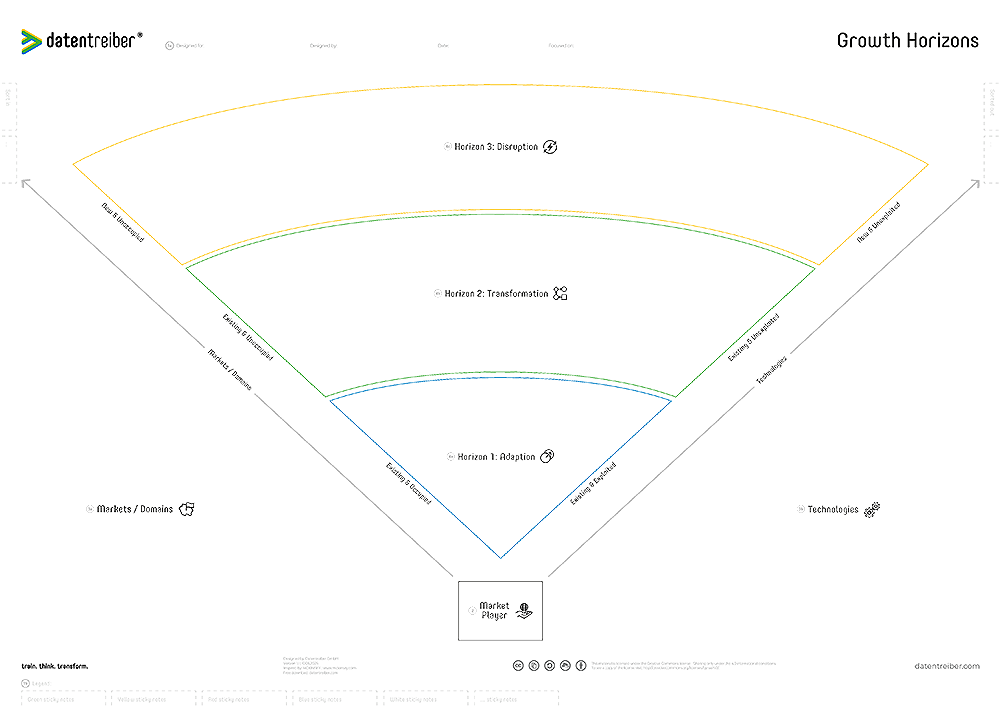

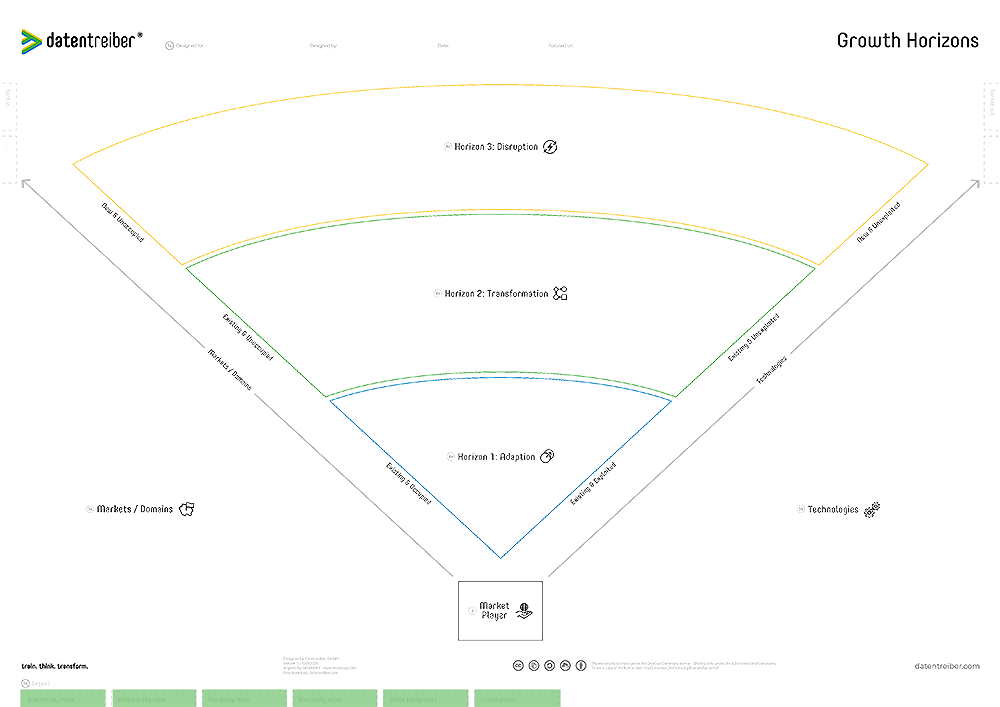
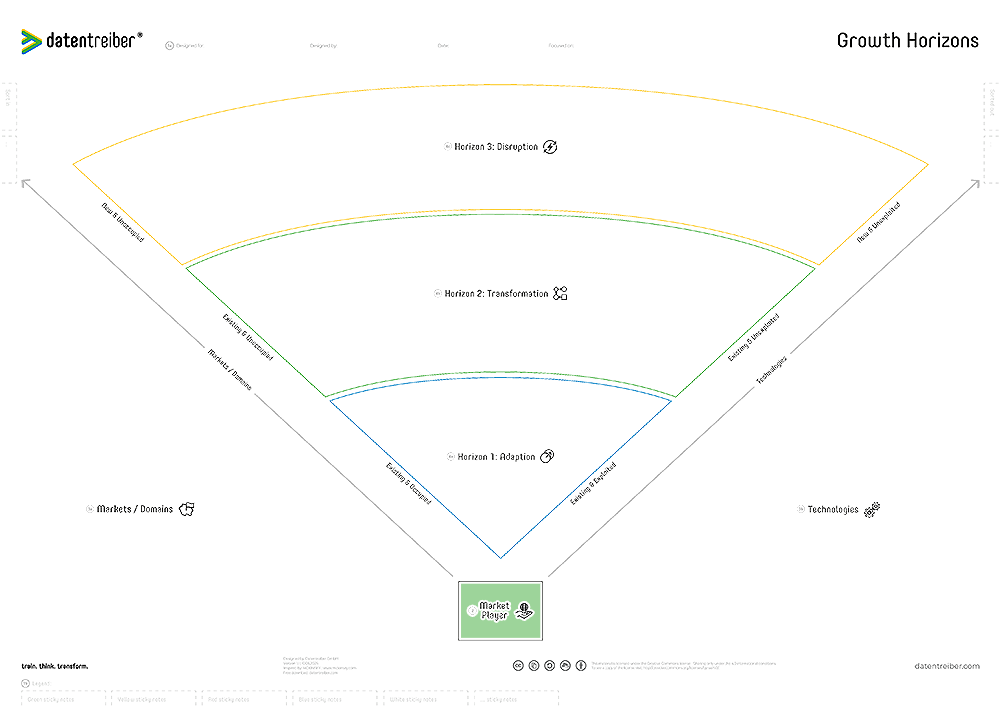
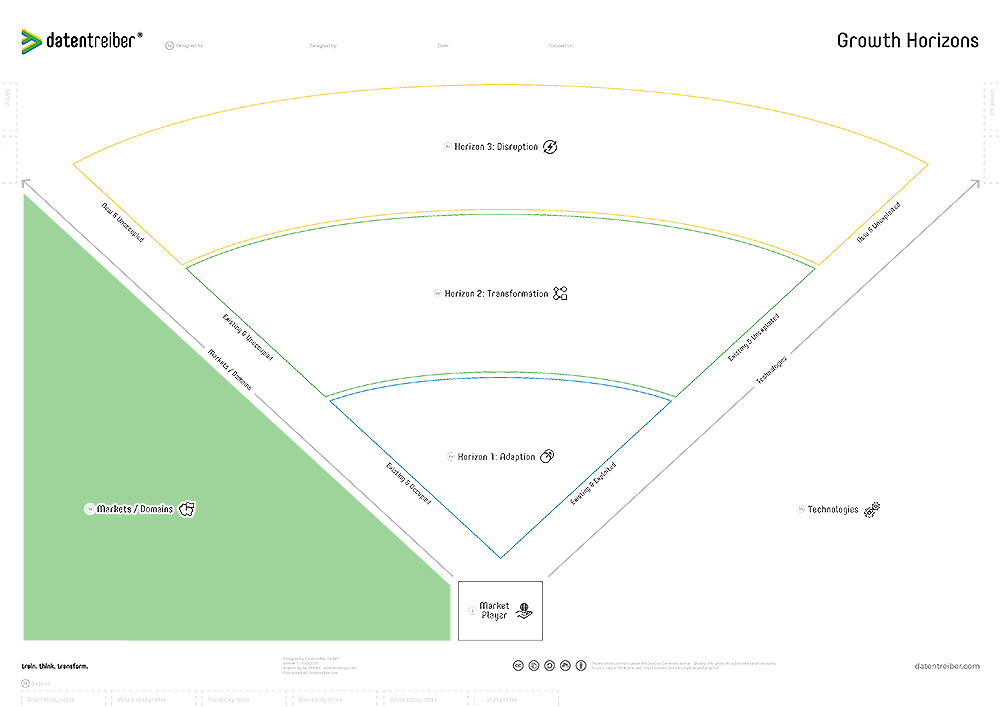



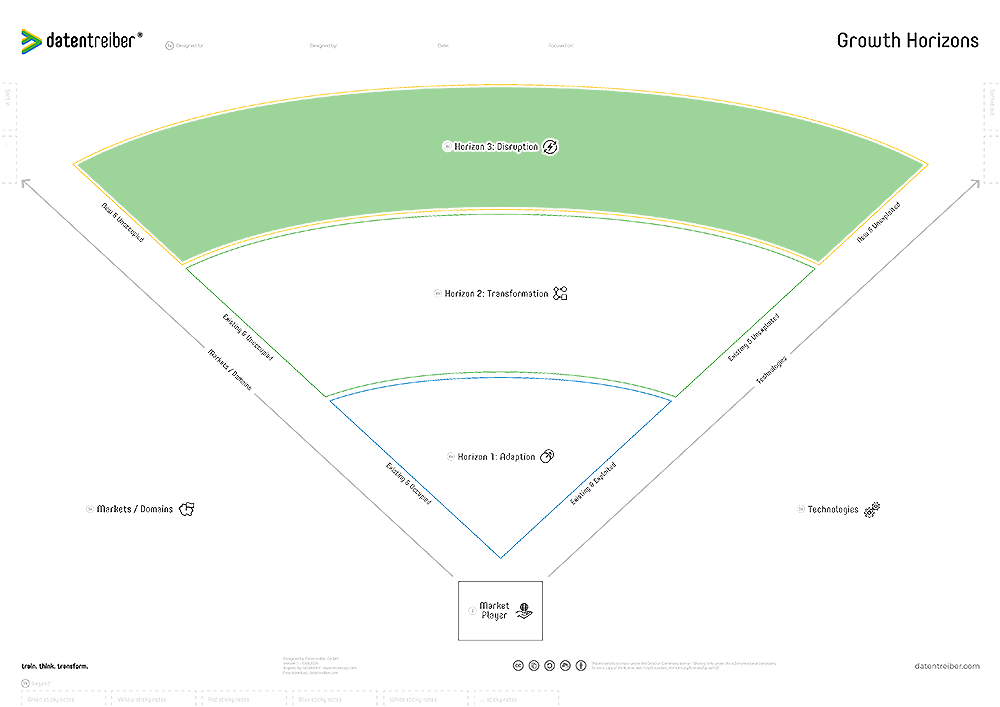
The Canvas Sections
1a Header
This is a Placeholder Text for 1a Header.
2 Market Player
This is a Placeholder Text for 2 Market Player.
3a Markets / Domains
This is a Placeholder Text for 3a Markets / Domains.
3b Technologies
This is a Placeholder Text for 3b Technologies.
4a Horizon 1: Adaption
This is a Placeholder Text for 4a Horizon 1: Adaption.
4b Horizon 2: Transformation
This is a Placeholder Text for 4b Horizon 2: Transformation.
4c Horizon 3: Disruption
This is a Placeholder Text for 4c Horizon 3: Disruption.

Where Can I Find More Information?
- Find detailed tutorials and examples on how to use the canvas in the context of designing a fully integrated data & AI strategy in our Data & AI Design Bench.
- The Growth Horizons Canvas is based on the Three Horizons Framework by McKinsey.
- Data Thinker Group (LinkedIn)

